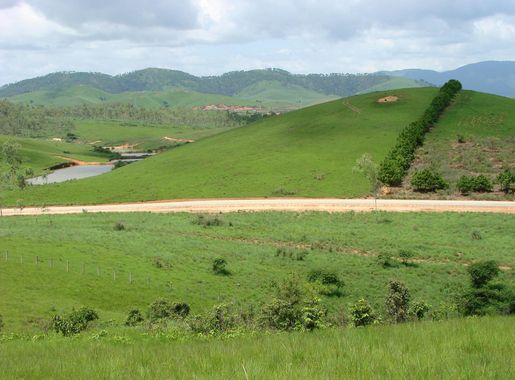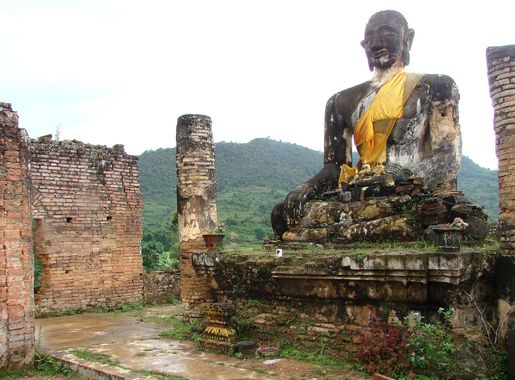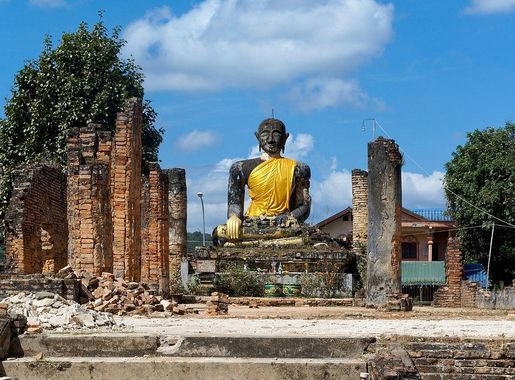
Xiangkhoang Province: Laos' Historic Heartland
Discover the ancient mysteries, rich history, and natural beauty of Xiangkhoang Province, home to the enigmatic Plain of Jars and vibrant local culture.
Nestled in the northeastern region of Laos, Xiangkhoang Province is a treasure trove of history, culture, and natural beauty. Famous for the enigmatic Plain of Jars, this area invites visitors to explore its ancient archaeological sites. The Plain of Jars features thousands of large stone jars scattered across the landscape, believed to date back over 2,000 years. The origins and purpose of these jars remain a mystery, sparking the curiosity and imagination of all who visit. The province's capital, Phonsavan, serves as a gateway to these sites and offers a glimpse into local life. The town is a blend of traditional Laotian culture and remnants of French colonial influence. Visitors can enjoy the vibrant markets, sample local cuisine, and interact with the friendly residents. Phonsavan also houses the Mines Advisory Group (MAG) visitor center, where you can learn about the province's history during the Vietnam War and the ongoing efforts to clear unexploded ordnance. Beyond its historical and cultural attractions, Xiangkhoang Province boasts stunning natural scenery. The rolling hills, pine forests, and picturesque valleys make it a paradise for nature lovers. Trekking, bird watching, and visiting waterfalls are popular activities for those looking to immerse themselves in the serene landscape. The province is also home to traditional Hmong and Khmu villages, offering a unique opportunity to experience the diverse ethnic cultures of Laos.
Local tips in Xiangkhoang Province
- Visit the Plain of Jars early in the morning to avoid crowds and enjoy the best light for photography.
- Explore the local markets in Phonsavan for unique souvenirs and delicious street food.
- Respect local customs when visiting traditional villages; dress modestly and ask for permission before taking photos.
- Check the weather forecast before planning outdoor activities, as the region can experience sudden changes in weather.
- Learn about the historical significance of the area at the MAG visitor center to gain a deeper understanding of the local challenges.
Xiangkhoang Province: Laos' Historic Heartland
Nestled in the northeastern region of Laos, Xiangkhoang Province is a treasure trove of history, culture, and natural beauty. Famous for the enigmatic Plain of Jars, this area invites visitors to explore its ancient archaeological sites. The Plain of Jars features thousands of large stone jars scattered across the landscape, believed to date back over 2,000 years. The origins and purpose of these jars remain a mystery, sparking the curiosity and imagination of all who visit. The province's capital, Phonsavan, serves as a gateway to these sites and offers a glimpse into local life. The town is a blend of traditional Laotian culture and remnants of French colonial influence. Visitors can enjoy the vibrant markets, sample local cuisine, and interact with the friendly residents. Phonsavan also houses the Mines Advisory Group (MAG) visitor center, where you can learn about the province's history during the Vietnam War and the ongoing efforts to clear unexploded ordnance. Beyond its historical and cultural attractions, Xiangkhoang Province boasts stunning natural scenery. The rolling hills, pine forests, and picturesque valleys make it a paradise for nature lovers. Trekking, bird watching, and visiting waterfalls are popular activities for those looking to immerse themselves in the serene landscape. The province is also home to traditional Hmong and Khmu villages, offering a unique opportunity to experience the diverse ethnic cultures of Laos.
When is the best time to go to Xiangkhoang Province?
Iconic landmarks you can’t miss
Patuxay - Victory Monument
Discover the grandeur of Patuxay, Vientiane's iconic Victory Monument, blending history and stunning views in the heart of Laos.
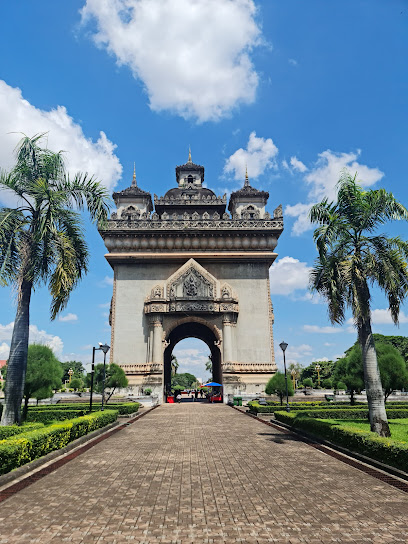
Pha That Luang Vientiane
Explore the magnificent Pha That Luang, a symbol of Laotian culture and spirituality, featuring a stunning gold stupa and rich historical significance.
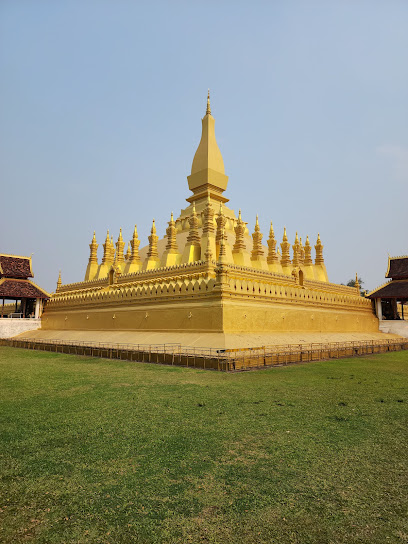
Phousi Hill
Discover the spiritual heart of Luang Prabang by climbing Phousi Hill, where breathtaking views and cultural richness await every traveler.
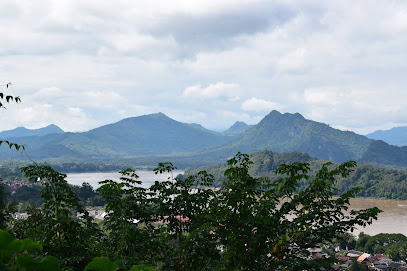
Wat Xiengthong
Explore the stunning architecture and spiritual tranquility of Wat Xiengthong, a must-visit Buddhist temple in Luang Prabang, Laos.
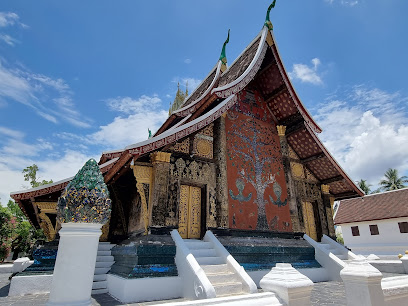
National Museum
Explore the rich cultural heritage of Laos at the National Museum in Luang Prabang, a unique glimpse into the country's royal history and traditions.
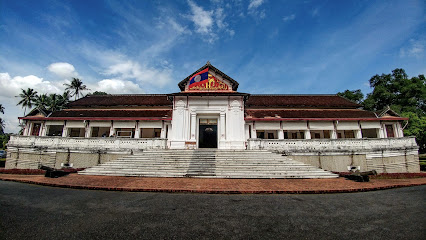
Phou Khao Khouay National Bio-Diversity Conservation Area
Explore the breathtaking landscapes and rich biodiversity of Phou Khao Khouay National Bio-Diversity Conservation Area in Laos, a paradise for nature lovers and adventurers.
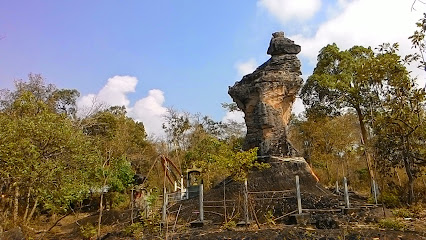
Pak Ou Caves
Discover the spiritual heart of Laos at Pak Ou Caves, a breathtaking site filled with thousands of Buddha statues and rich cultural history.
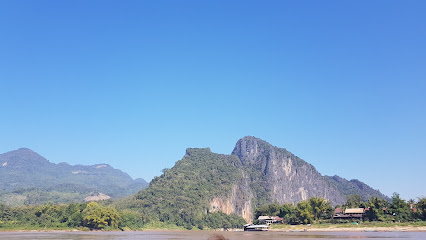
Nong Khiaw Viewpoint
Explore the stunning Nong Khiaw Viewpoint, a top observation deck in Laos offering breathtaking views of mountains and rivers, perfect for nature lovers and photographers.
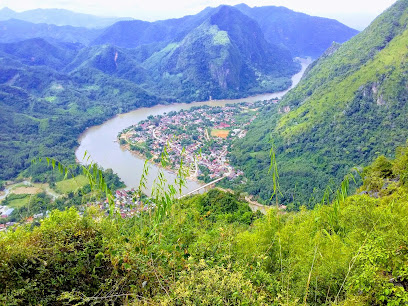
Mad Monkey Luang Prabang
Experience the vibrant social scene at Mad Monkey Luang Prabang, the perfect youth hostel for adventurous travelers exploring Laos.
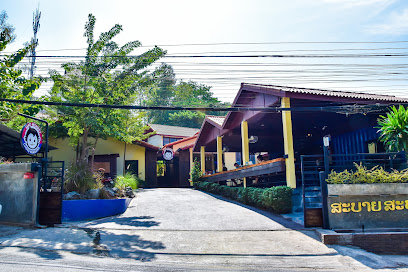
Plain Of Jars Visitor Center
Discover the ancient mysteries of the Plain of Jars at the Visitor Center in Phonsavan, where history and culture come alive.
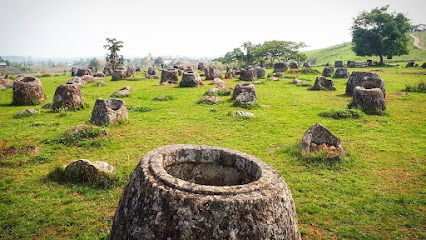
Plain of Jars Site 3
Explore the enigmatic Plain of Jars Site 3 in Laos, a UNESCO World Heritage Site filled with ancient mysteries and breathtaking landscapes.
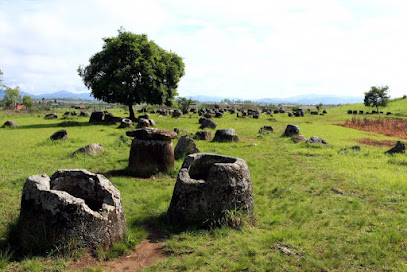
View Khem Khong
Discover the tranquility of Laos at View Khem Khong, a charming guest house offering stunning river views and authentic local experiences.

Ock Pop Tok Living Craft Centre
Explore the heart of Laotian culture at Ock Pop Tok Living Craft Centre, where traditional craftsmanship meets sustainable practices.
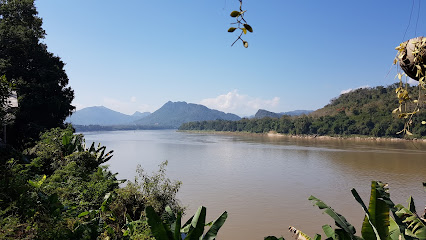
Kong Keo Guesthouse, Tours & Motorbike rental
Discover the charm of Phonsavan while staying at Kong Keo Guesthouse, featuring cozy accommodations and convenient motorbike rentals for your adventure.

Thongbay Guesthouse Luang Prabang
Experience the serene charm of Thongbay Guesthouse in Luang Prabang, where traditional Lao culture meets modern comfort in a tranquil setting.

Unmissable attractions to see
Plain Of Jars Visitor Center
Discover the ancient secrets of the Plain of Jars at the Visitor Center in Phonsavan, Laos, where history and culture come alive.
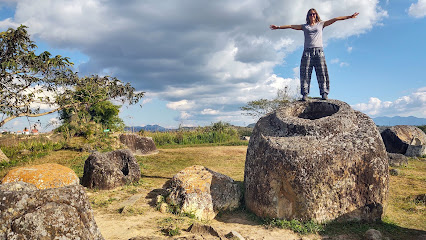
Plain of Jars Site 2
Uncover the ancient mysteries of the Plain of Jars Site 2 in Laos, a UNESCO World Heritage site filled with historical intrigue and stunning landscapes.

MAG UXO Visitor Information Centre, Phonsavan
Explore the MAG UXO Visitor Information Centre in Phonsavan, where history, safety, and resilience come together to tell the story of Laos's journey.
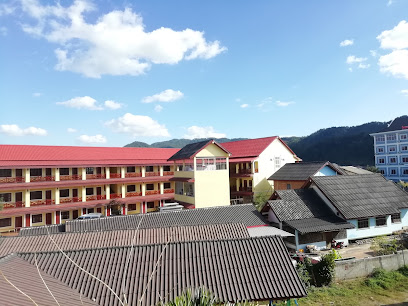
Cánh đồng chum
Explore the enigmatic Plain of Jars in Laos, a UNESCO World Heritage site featuring thousands of ancient stone jars set against breathtaking landscapes.
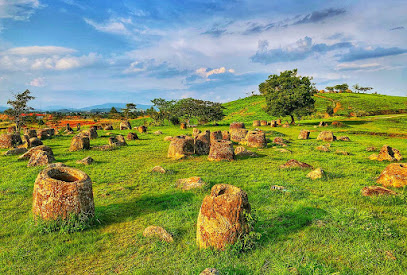
Xieng Khouang Provincial Museum
Explore the rich history and culture of Laos at Xieng Khouang Provincial Museum, a hub of fascinating artifacts and local heritage.
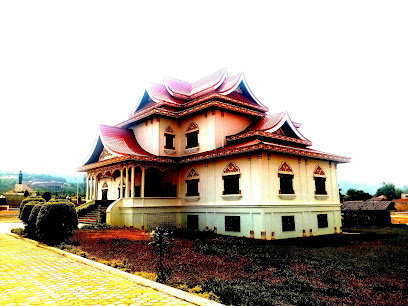
ເດີ່ນບຸນກີນຈຽງ ແຂວງຊຽງຂວາງ
Explore Phonsavan Park, a serene escape in Laos with lush greenery, tranquil ponds, and a glimpse into local culture.
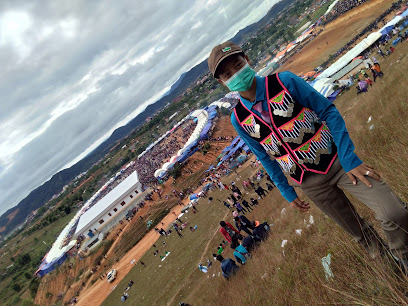
Plain of Jars Site 3 - Ticket Office
Uncover the ancient secrets of the Plain of Jars Site 3 in Xiang Di, a UNESCO World Heritage site with stunning landscapes and rich history.
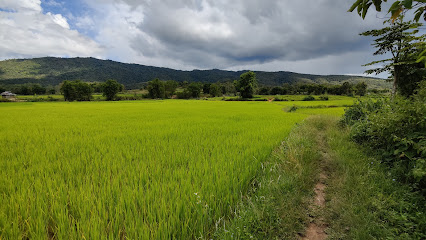
Laos War Memorial
Discover the Laos War Memorial in Phonsavan, a moving tribute to resilience and courage amidst stunning landscapes.
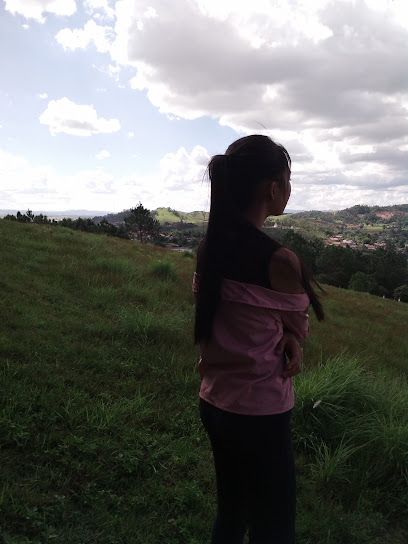
ສວນສິງຫາ Soun Singha สวนสิงหา
Discover the tranquility of Soun Singha Park in Phonsavan, where nature and culture come together in a serene escape.
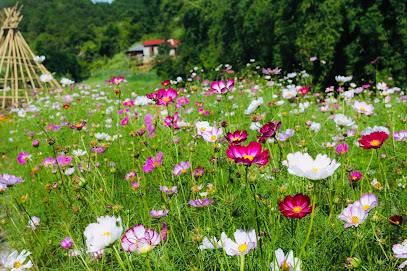
Vietnamese War Monument
Explore the Vietnamese War Monument in Phonsavan, a powerful tribute to resilience and history amidst serene landscapes.
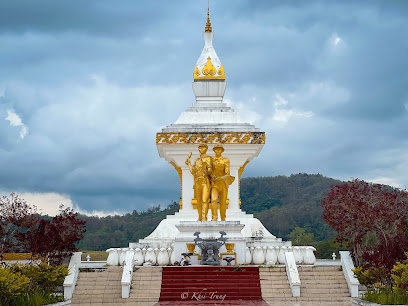
Tad Lang Waterfalls
Experience the tranquility of Tad Lang Waterfalls, a stunning natural retreat surrounded by lush landscapes and vibrant ecosystems in Xiang Di, Laos.
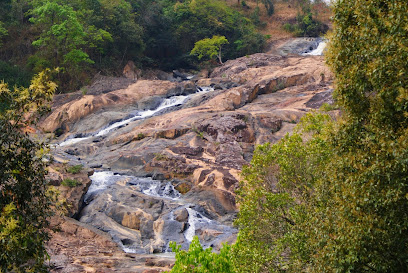
スワンヒン遺跡(ヒンタン)
Discover the enchanting beauty of Swankhon Cave in Muang Peun, where nature's artistry creates a breathtaking underground world.
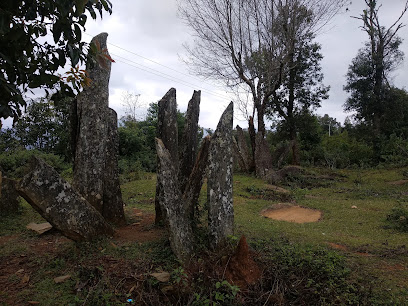
Ban Phakeo Trek
Explore the breathtaking trails and vibrant culture at Ban Phakeo Trek in Muang Phan, Laos - a paradise for nature lovers and adventurers alike.
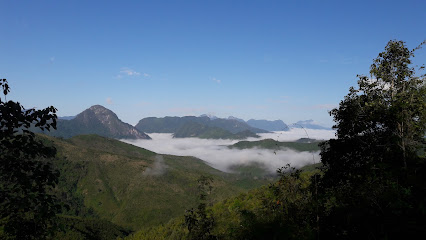
Tchao Anouvong cave
Explore the enchanting Tchao Anouvong Cave in Songkeo, Laos, where natural beauty meets rich cultural heritage, making it a must-visit for adventurers.
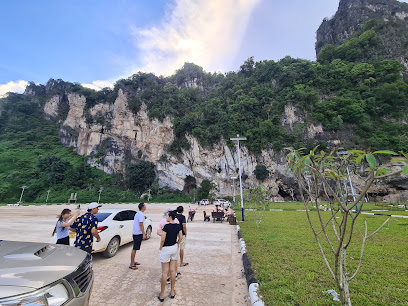
Public hot spring
Discover the healing waters of the Public Hot Spring in Ban Lao, a tranquil escape surrounded by nature's beauty and serenity.

Essential places to dine
Simmary
Experience the rich flavors of Laos at Simmary - an authentic Laotian restaurant in Phonsavan offering delightful traditional dishes.

Craters Restaurant & coffe
Discover authentic Lao cuisine at Craters Restaurant & Coffee in Phonsavan—where history meets flavor.
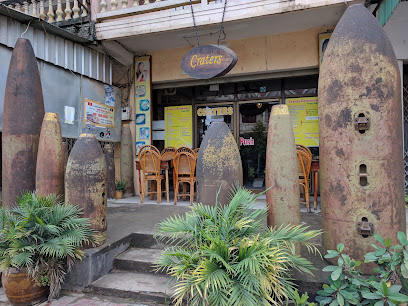
Sabaidee Xiengkhouang
Discover authentic Lao cuisine at Sabaidee Xiengkhouang in Phonsavan - where tradition meets flavor in every bite.
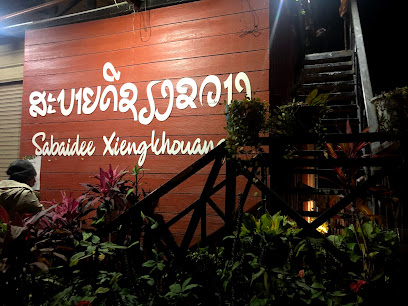
Mario Restaurant ຮ້ານອາຫານມາລິໂອ່
Savor authentic Laotian cuisine at Mario Restaurant in Phonsavan – a delightful culinary experience awaits you.

ຮ້ານອາຫານ ລາບແຊບຊຽງຂວາງ
Discover the heart of Laotian flavors at ຮ້ານອາହାນ ລາบແැዙ་སྤྱས; an unmissable culinary experience in Phonsavan.
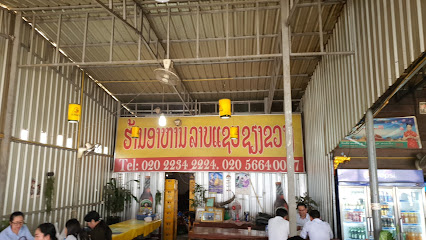
Aroma Food Bakery Xiengkhouang Laos
Discover authentic Lao flavors at Aroma Food Bakery in Xiengkhouang – where every bite tells a story.
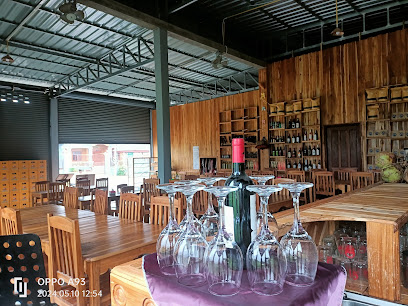
ຮ້ານເຝີນາງລາ Mrs. La Noodle Shop
Experience authentic Laotian flavors at Mrs. La Noodle Shop in Phonsavan - where every dish tells a story.
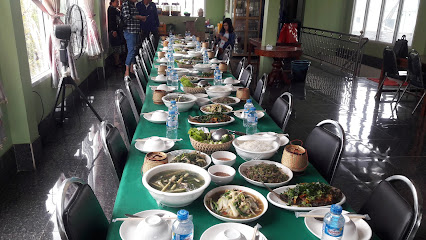
ຮ້ານອາຫານແອນຟິວ
Savor authentic Lao dishes at ຮ້ານອາຫານແອນຟິວ in Phonsavan - where every meal tells a story.
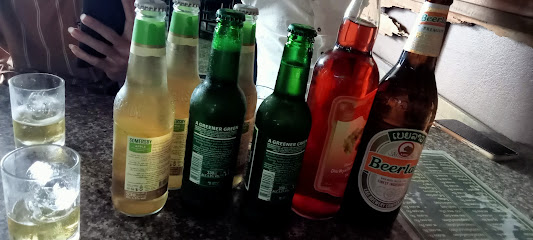
Sainamkat Restaurant
Discover authentic Laotian cuisine at Sainamkat Restaurant in Phonsavan - A must-visit for every traveler seeking local flavors.
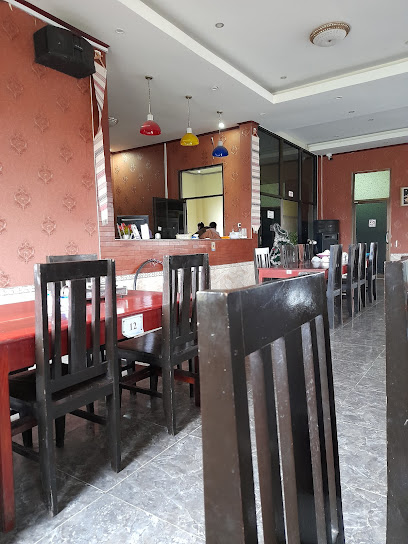
ຮ້ານອາຫານທັອບຟາຍ Top 5 Restaurant
Savor authentic Laotian flavors at Top 5 Restaurant in Phonsavan – where tradition meets taste in every dish.
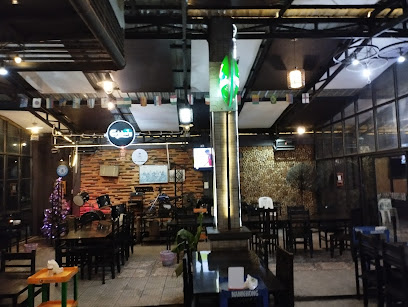
Phonxay Restaurant
Discover authentic Laotian cuisine at Phonxay Restaurant in Phonsavan, where tradition meets flavor in every dish.
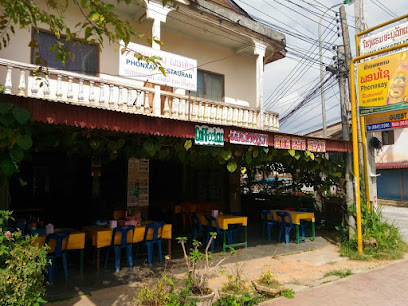
Bombie's restaurant
Discover the rich flavors of Laotian cuisine at Bombie's Restaurant in Ban Phonsavan - where tradition meets taste.
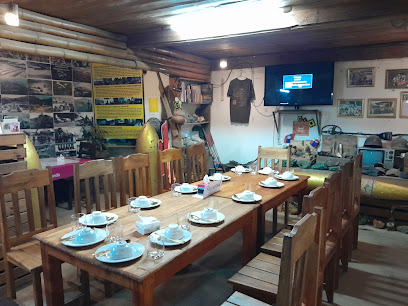
Cơm Phở Ngọc Hoàng
Experience authentic Vietnamese flavors at Cơm Phở Ngọc Hoàng in Phonsavan, where every dish tells a story.
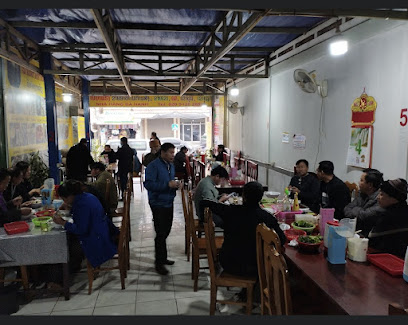
ຮ້ານອາຮານ ໝອງອໍ້
Discover authentic Lao flavors at ຮ້ານອາຮານ ໝອງອໍ້ in Phonsavan – where every dish tells a story.
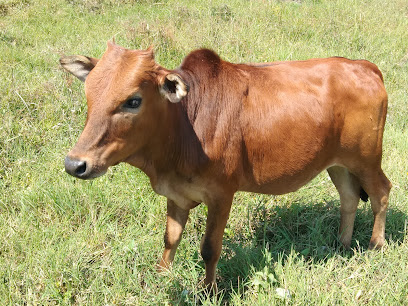
ນາງນ້ອຍ (ປີ້ງເອັນ, ປີ້ງໃສ້, ປີ້ງເອັນເຫຼືອງ)
Savor the best barbecue in Phonsavan at ນາງນ້ອຍ – where authentic flavors meet warm hospitality.
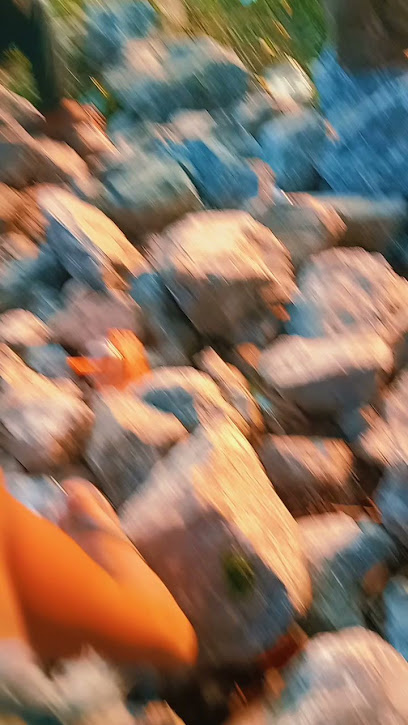
Markets, malls and hidden boutiques
Plain Of Jars Visitor Center
Discover the mysteries of ancient Laos at the Plain of Jars Visitor Center, where history and culture come alive through fascinating exhibits and artifacts.
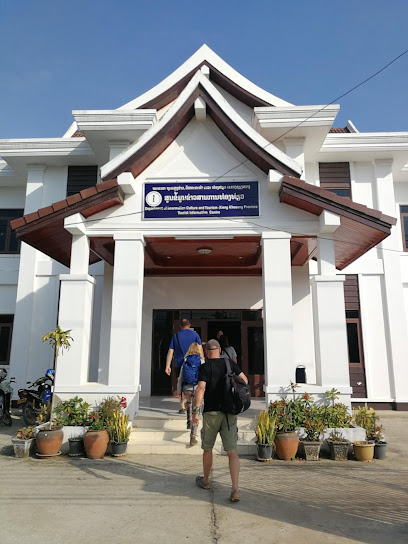
Ock Pop Tok Living Craft Centre
Explore the rich heritage of Laotian craftsmanship at Ock Pop Tok Living Craft Centre, a cultural gem in Luang Prabang offering workshops and unique handmade treasures.
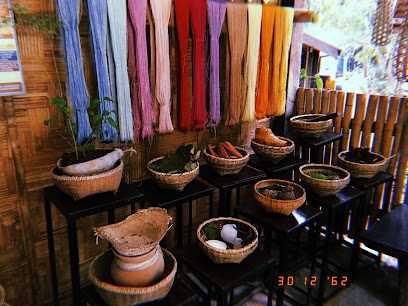
The Boutique by Ock Pop Tok
Explore The Boutique by Ock Pop Tok in Luang Prabang for a unique blend of traditional crafts, textiles, and sustainable shopping experiences.
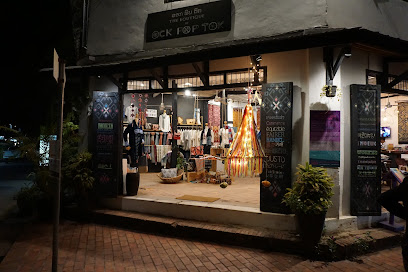
MINISO
Explore MINISO in Luang Prabang for trendy gifts, stylish accessories, and unique souvenirs that capture the spirit of your travels.

TAEC Boutique
Explore TAEC Boutique in Luang Prabang for unique handcrafted souvenirs and ethical fashion that celebrate the rich culture of Laos.
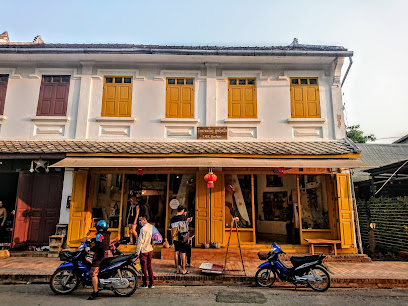
T'Shop Lai Gallery
Explore T'Shop Lai Gallery in Vientiane for exquisite home goods and handcrafted treasures that embody the spirit of Laotian culture.
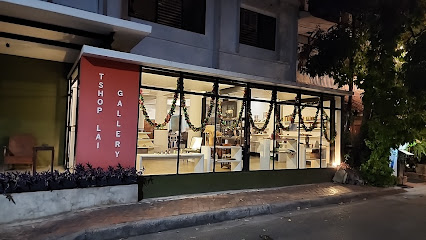
Pathana Boupha Antique House
Explore the captivating world of antiques and crafts at Pathana Boupha Antique House in Luang Prabang, where every piece tells a story.
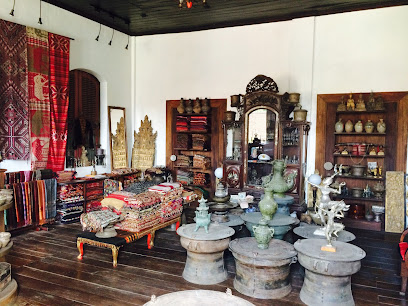
Khinthong Lao Silk
Explore Khinthong Lao Silk in Luang Prabang for authentic, handcrafted silk products that celebrate the rich heritage of Lao weaving.
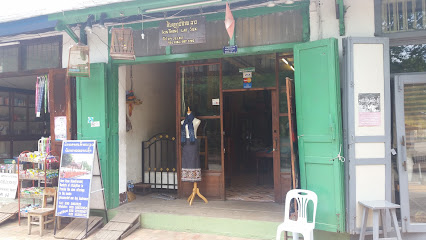
Vankham Mobile 1
Discover Vankham Mobile 1 in Muang Kham, Laos - your trusted source for mobile devices and accessories amidst your travels.
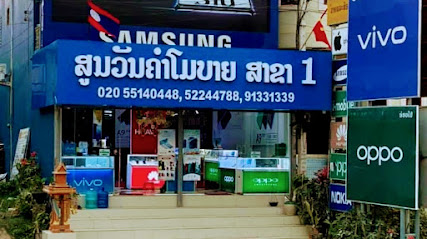
ຮ້ານ 3 ແຍກໄຟແດງນ້ຳຫງຳ ຂາຍກະບອງເພັດ - ຖົງຕີນ
Uncover local treasures at the Gift Basket Store, where every basket is a celebration of culture and creativity in the heart of the town.
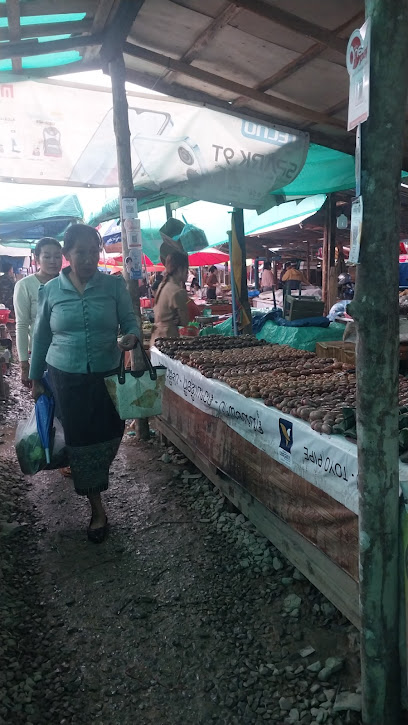
CAMA Crafts
Discover the beauty of Lao craftsmanship at CAMA Crafts, where every item is a unique piece of art and a testament to local culture.
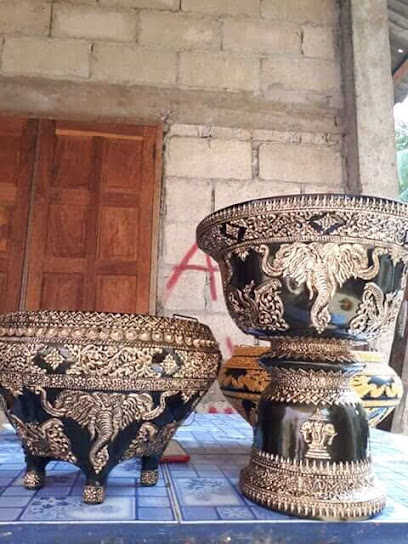
Lalao
Explore Lalao, a unique clothing store in Luang Prabang, where traditional craftsmanship meets modern design in an unforgettable shopping experience.
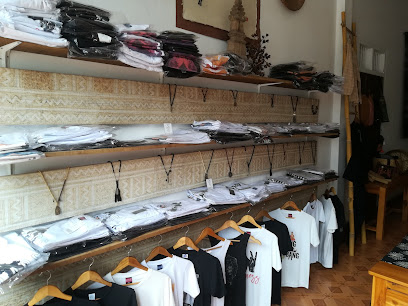
Nit's Tailor
Explore Nit's Tailor in Beng for handcrafted clothing that embodies local culture and style, perfect for any occasion.

ຮ້ານ ຊື້ເຂົ້າ-ຂາຍເຂົ້າ ນາງຫງັວນ
Explore the authentic flavors of Laos at ຮ້ານ ຊື້ເຂົ້າ-ຂາຍເຂົ້າ ນາງຫງັວນ, a cultural gem in Muang Kham offering local rice products and unique handmade souvenirs.
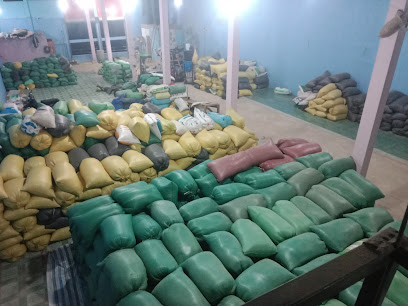
Souvenir Shop
Explore an enchanting souvenir shop in Luang Prabang, offering unique local clothing and handicrafts that capture the essence of Laos.
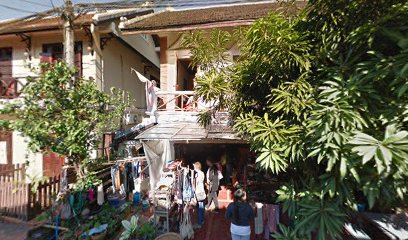
Essential bars & hidden hideouts
Tree Town Restaurant and Pub (ຮ້ານອາຫານ&ບັນເທີງ ທີທາວ)
Discover the lively essence of Phonsavan at Tree Town Restaurant and Pub, where culture meets nightlife in a vibrant disco club atmosphere.
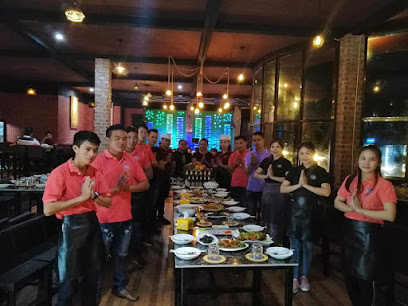
Bombie's restaurant
Experience authentic Thai cuisine in Ban Phonsavan at Bombie's Restaurant, where every dish tells a story of Laos' rich culinary heritage.
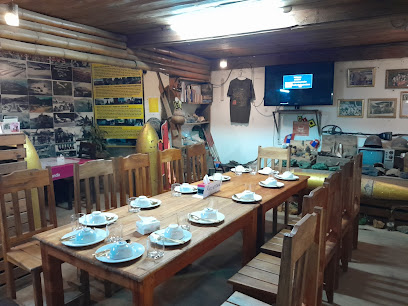
ນັ່ງຊິວ ບາຣ໌ກູ
Discover the vibrant atmosphere of ນັ່ງຊິວ ບາຣ໌ກູ in Phonsavan, where local flavors meet a lively nightlife experience.
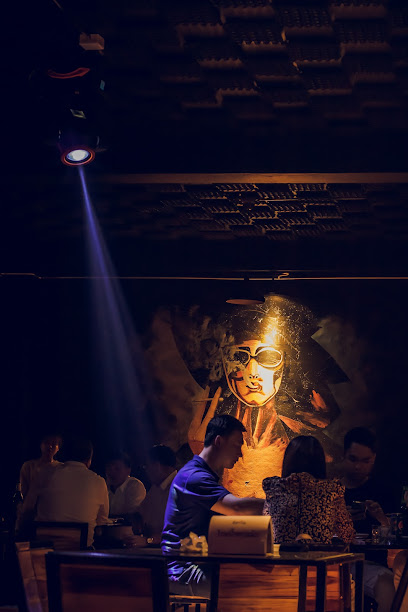
ມາຫຼີ້ນບາຣ໌
Explore the vibrant nightlife of Phonsavan at ມາຫຼີ້ນບາຣ໌, where traditional charm meets modern fun.
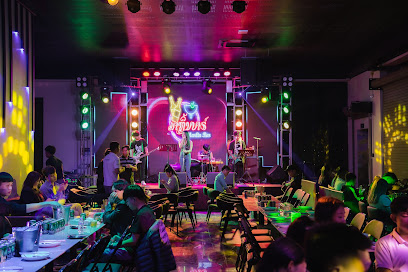
ຮ້ານອາຫານຕົ້ນແປກ
Experience authentic Lao cuisine and vibrant nightlife at ຮ້ານອາຫານຕົ້ນແປກ in Phonsavan, a must-visit bar for every traveler.

The king bar and restaurant
Discover the vibrant nightlife at The King Bar and Restaurant in Phonsavan, offering a delightful mix of local flavors and a lively atmosphere.
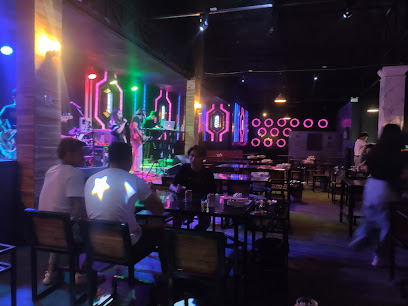
ແສງສະຫວ່າງ
Experience the vibrant nightlife at ແສງສະຫວ່າງ, a popular gay bar in Ban Pho Hièou, where fun and inclusivity meet in a lively atmosphere.
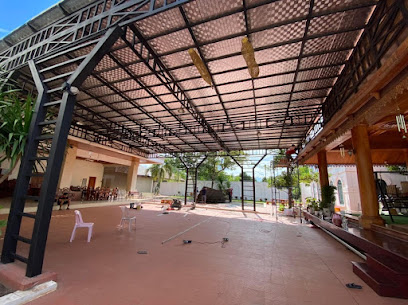
ເທັກ Nana night club
Discover the electrifying ambiance of Tech Nana Night Club in Phonsavan, where music and culture collide for an unforgettable nightlife experience.

ສະບາຍດີຊາບູ
Experience the vibrant atmosphere of ສະບາຍດີຊາບູ, a charming bar in Ban Pho Hièou offering delightful drinks and local flavors.
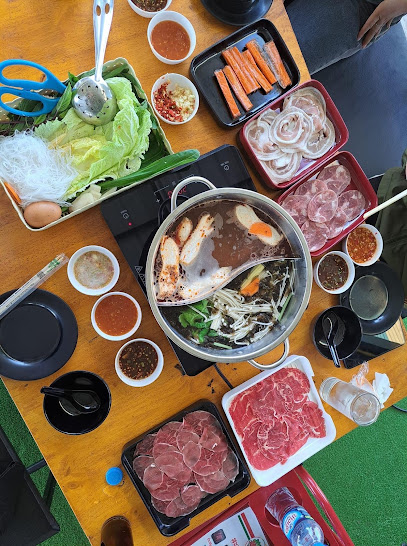
FriendZone -
Experience the vibrant nightlife at FriendZone, Phonsavan's top bar offering diverse drinks and a lively atmosphere perfect for unwinding.

ນນ
Experience the vibrant bar scene in Muang Khoun, where local culture meets a welcoming atmosphere and refreshing beverages await.

ເຫຼົ້າໄຫນໍ້າເກາະເມືອງແປກແຂວງຊຽງຂວາງ
Experience the vibrant nightlife of Pakse at the Waterfall Bar, where refreshing drinks and friendly faces await.
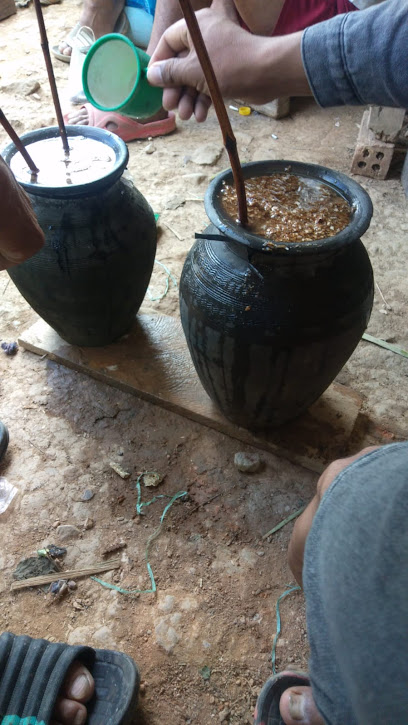
Talo’90
Experience the vibrant nightlife of Ban Pho Hièou at Talo’90, where locals and tourists come together over refreshing drinks and good company.

ຮ້ານ ຈ່ອຍ ສະນຸກເກີ້
Discover the lively ambiance and local charm at ຮ້ານ ຈ່ອຍ ສະນຸກເກີ້, a vibrant bar in Ban Pho Hièou offering refreshing drinks and a taste of Lao culture.

ຮ້ານ ເດິນິວ
Discover the vibrant atmosphere and expertly crafted drinks at ຮ້ານ ເດິນິວ, a must-visit bar along the scenic banks of ທ່າແຕງ.

Local Phrases about Xiangkhoang Province
-
- Helloສະບາຍດີ
[sa baai di] - Goodbyeສະບາຍດີ
[la khon] - Yesຕົວ
[tua] - Noບໍ່
[bo] - Please/You're welcomeກະລຸນາ
[ka lao] - Thank youຂໍຂອບ
[khop jai] - Excuse me/Sorryຂໍຂອບ
[khop jai] - How are you?ສະຖານະວ່າທັກໝືກ?
[sa thana wa tak muk?] - Fine. And you?ປະວັດໄດ້. ທັກໝືກເອ?
[pa wat dai. tak muk ao?] - Do you speak English?ເຈົ້າໄດ້ວຽກພາສາອັງກິດບໍ?
[jao dai wiak phasa angkit bo?] - I don't understandຂ້າພະເຈົ້າບໍ່ເຂົ້າ
[kha pa jao bo khao]
- Helloສະບາຍດີ
-
- I'd like to see the menu, pleaseຂ້າພະດັບອາຫານຢູ່ກວາງ
[kha pa dap ahan yu kwang] - I don't eat meatຂ້າພະບໍ່ກິນຮາກອາຫານ
[kha pa bo kin hag ahan] - Cheers!ສະບາຍດີ
[sa baai di] - I would like to pay, pleaseຂ້າພະຈ່າຍກວາງ
[kha pa chai kwang]
- I'd like to see the menu, pleaseຂ້າພະດັບອາຫານຢູ່ກວາງ
-
- Help!ຊ່າງຊ່າງ!
[sang sang] - Go away!ໄດ້ວ່າງ!
[dai wang] - Call the Police!ໂທດີແລະຜູ້ສາຍ!
[tho di lae phu sai] - Call a doctor!ໂທດີແລະປະທານ!
[tho di lae pa than] - I'm lostຂ້າພະເກີດ
[kha pa ket] - I'm illຂ້າພະກາງໄດ້
[kha pa kang dai]
- Help!ຊ່າງຊ່າງ!
-
- I'd like to buy...ຂ້າພະຊືວງ...
[kha pa suang...] - I'm just lookingຂ້າພະໄດ້ບໍ່ຊອບ
[kha pa dai bo sop] - How much is it?ມັກແລະຢູ່ເດືອນດຽວ?
[mak leu yu duan yuay?] - That's too expensiveນີ້ການຂອບເຂົ້າແລ້ວ
[ni kan kop khao laew] - Can you lower the price?ເຈົ້າຈ່າຍເລີ່ມຕົວເກີນແລ້ວບໍ?
[jao chai leum tua kan laew bo?]
- I'd like to buy...ຂ້າພະຊືວງ...
-
- What time is it?ເວລາແລ້ວເມື
[welalao leum] - It's one o'clockແລ້ວເມືແລະ
[leum leu] - Half past (10)ສິບອາທິດ
[sip atid] - Morningເຊັນ
[sane] - Afternoonບ່ອນ
[bon] - Eveningປອນ
[ban] - Yesterdayວັນວັນກ່ອນ
[wan wan kao] - Todayວັນນີ້
[wan ni] - Tomorrowມື້ອື້ນ
[mein un] - 1ໜ້າ
[na] - 2ສອງ
[song] - 3ສາມ
[sam] - 4ສີ່
[si] - 5ຫ້າ
[ha] - 6ຫົກ
[hok] - 7ເຈັດ
[chet] - 8ແປດ
[paet] - 9ເກົ້າ
[kao] - 10ສິບ
[sip]
- What time is it?ເວລາແລ້ວເມື
-
- Where's a/the...?ຢູ່ໃກ້...
[yu kwai...] - What's the address?ທີ່ຢູ່ອີມ່ວນ້ອຍ?
[ti yu imuan noi?] - Can you show me (on the map)?ເຈົ້າສະແດງກັບຂ່າວ?
[jao sa dang kab gaw?] - When's the next (bus)?ມື້ອື້ນມື້ກ່ອນຂອບ?
[mein un mein kao kop?] - A ticket (to ....)ເງິນຟາຍ (...)
[ngern fai (...)]
- Where's a/the...?ຢູ່ໃກ້...
History of Xiangkhoang Province
-
The Plain of Jars is one of the most enigmatic archaeological sites in Southeast Asia, located in Xiangkhoang Province. This vast landscape is dotted with thousands of large stone jars, each weighing up to several tons. These jars date back to the Iron Age (500 BCE to 500 CE) and are thought to have been used for burial practices. The origins and purpose of these jars remain a subject of speculation and study.
-
Xiangkhoang Province was once the heartland of the Kingdom of Muang Phuan, a significant Tai kingdom. Muang Phuan flourished from the 14th to the 19th centuries, with its capital at Xieng Khouang. The kingdom played a crucial role in the regional politics of Southeast Asia, engaging in trade and warfare with neighboring powers, including the Khmer Empire and the Lan Xang Kingdom.
-
In the late 19th century, Laos, including Xiangkhoang Province, came under French colonial rule as part of French Indochina. The French influence brought about changes in the administration, infrastructure, and economy of the region. Xiangkhoang became a strategic location due to its resources and geographical position, laying the groundwork for future conflicts.
-
During the Vietnam War, Xiangkhoang Province was heavily impacted due to its proximity to the Ho Chi Minh Trail. From 1964 to 1973, the U.S. conducted a secret bombing campaign in Laos, making it one of the most heavily bombed places per capita in history. The Plain of Jars and surrounding areas were severely affected, leaving behind unexploded ordnance (UXO) that continues to pose a danger to this day.
-
Following the end of the Vietnam War and the establishment of the Lao People's Democratic Republic in 1975, Xiangkhoang Province has been on a path to recovery. Efforts to clear unexploded ordnance have been ongoing, with international organizations and the Lao government working together. The region has also focused on developing its tourism sector, promoting the historical and cultural significance of sites like the Plain of Jars.
-
Xiangkhoang Province is home to a diverse population, including ethnic groups such as the Hmong, Tai Dam, and Khmu. Each group has its own unique traditions, languages, and cultural practices. Festivals, traditional crafts, and local cuisine reflect this rich cultural tapestry, offering visitors a glimpse into the vibrant life of the province's inhabitants.
Xiangkhoang Province Essentials
-
Xiangkhoang Province is located in northern Laos. The nearest airport is Xieng Khouang Airport (XKH) in Phonsavan, the province's capital. Direct flights are available from Vientiane, the capital city of Laos. Alternatively, you can take a bus from Vientiane to Phonsavan, which takes about 8-10 hours. For a more scenic route, consider traveling by minivan or car, which allows you to stop at various points of interest along the way.
-
Within Xiangkhoang Province, local transportation options include tuk-tuks, motorbike taxis, and regular taxis. For longer journeys, buses and minivans are available, connecting major towns and tourist sites. Renting a motorbike or bicycle is also a popular option for exploring the province at your own pace. Be sure to negotiate the fare beforehand if using tuk-tuks or motorbike taxis.
-
The official currency in Laos is the Lao Kip (LAK). While some hotels and larger restaurants in Phonsavan may accept credit cards, it is advisable to carry cash, especially when visiting rural areas. ATMs are available in Phonsavan, but they can be scarce in smaller towns, so ensure you have sufficient cash before venturing out.
-
Xiangkhoang Province is generally safe for tourists. However, visitors should exercise standard precautions, such as avoiding isolated areas at night and keeping an eye on personal belongings in crowded places. Be mindful of unexploded ordnance (UXO) in remote areas and stick to well-trodden paths and marked tourist sites.
-
In case of emergency, dial 1191 for police assistance or 1195 for medical emergencies. Phonsavan has a hospital and several clinics that provide basic medical services. It is recommended to have travel insurance that covers medical emergencies. For minor health issues, pharmacies are available in Phonsavan where you can purchase over-the-counter medications.
-
Fashion: Do dress modestly, especially when visiting temples and religious sites. Avoid wearing revealing clothing. Religion: Do show respect for local customs and traditions. Always remove your shoes before entering temples and cover your shoulders and knees. Public Transport: Do be polite and patient when using public transport. Don't eat or drink on public buses. Greetings: Do greet people with a 'nop' (a slight bow with hands pressed together in a prayer-like gesture). Avoid physical contact, especially with monks. Eating & Drinking: Do try local dishes and accept food offerings graciously. Don't point at food with your finger, use your whole hand instead.
-
To experience Xiangkhoang Province like a local, visit the morning market in Phonsavan, where you can buy fresh produce and traditional Laotian goods. Engage with locals, who are often friendly and willing to share stories about their culture and history. Don't miss visiting the Plain of Jars, an archaeological site with mysterious stone jars scattered across the landscape. For a unique experience, participate in a traditional Laotian Baci ceremony, which involves tying strings around your wrists to promote good fortune.
Trending Landmarks in Xiangkhoang Province
-
Patuxay - Victory Monument
-
Pha That Luang Vientiane
-
Phousi Hill
-
Wat Xiengthong
-
National Museum
-
Phou Khao Khouay National Bio-Diversity Conservation Area
-
Pak Ou Caves
-
Nong Khiaw Viewpoint
-
Mad Monkey Luang Prabang
-
Plain Of Jars Visitor Center
-
Plain of Jars Site 3
-
View Khem Khong
-
Ock Pop Tok Living Craft Centre
-
Kong Keo Guesthouse, Tours & Motorbike rental
-
Thongbay Guesthouse Luang Prabang
Nearby Cities to Xiangkhoang Province
-
Things To Do in Phonsavan
-
Things To Do in Vang Vieng
-
Things To Do in Luang Prabang
-
Things To Do in Vientiane
-
Things To Do in Udon Thani
-
Things To Do in Nan
-
Things To Do in Muang Sing
-
Things To Do in Thakhek
-
Things To Do in Hanoi
-
Things To Do in Sapa
-
Things To Do in Loei
-
Things To Do in Chiang Rai
-
Things To Do in Savannakhet
-
Things To Do in Ha Long
-
Things To Do in Chiang Mai

